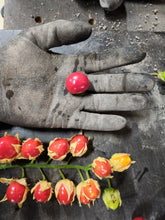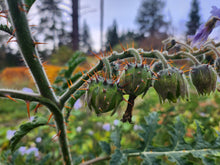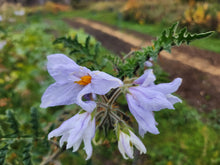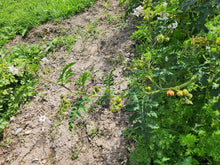Vila-Vila (Morelle de Balbis)
Regular price
$4.00
Sale
Solanum sisymbriifolium
Origin: South America
Improvement status: Landrace
Seeds per packet: ~30
Germination tested 10/2024: 53%
Life cycle: Annual
Vila-Vila is a South American tomato relative with sweet-sour fruit emerging from spiny husks on one of the prickliest plants you're evere likely to grow! Also called "litchi tomato" and "morelle de balbis," this plant is often grown as a trap crop for potato beetles and tomato hornworms — both of which are unbothered by the spines — but it's a charismatic enough plant to grow simply for its appearance, even if it turns out you don't like the fruit. We've only tasted the bright red fruit raw, and enjoyed them very much. The taste is somewhere between a sour cherry and a tomatillo (yes, that sounds strange, but it works). We're told they make excellent jams, jellies, chutneys, and pies.
This plant also has a history of medicinal use, in particular as a diuretic for kidney issues, as a treatment for high blood pressure, and as an abortifacient (the roots chewed to induce miscarriage). The journal "Natural Products and Bioprospecting" indicates that the plant has been studied and found to have the following capabilities: "antidiarrheal, hypotensive, antimicrobial, antioxidative, anticonvulsant, central nervous system depressant, antimolluscicidal, [and] analgesic."
Though native to South America, particularly Paraguay, vila-vila has naturalized itself around the world, including across much of the United States, but the weedy forms are usually less impressive than the cultivated types which can grow to 5 feet tall! Keep an eye around your garden or farm to make sure you don't accidently introduce it into your local area. Plants can survive frosts down to 25 degrees!
GROWING TIPS: Grow as you would a tomato, starting plants in flats a few weeks before last frost. Surface sow. Stake or trellis plants as necessary.










